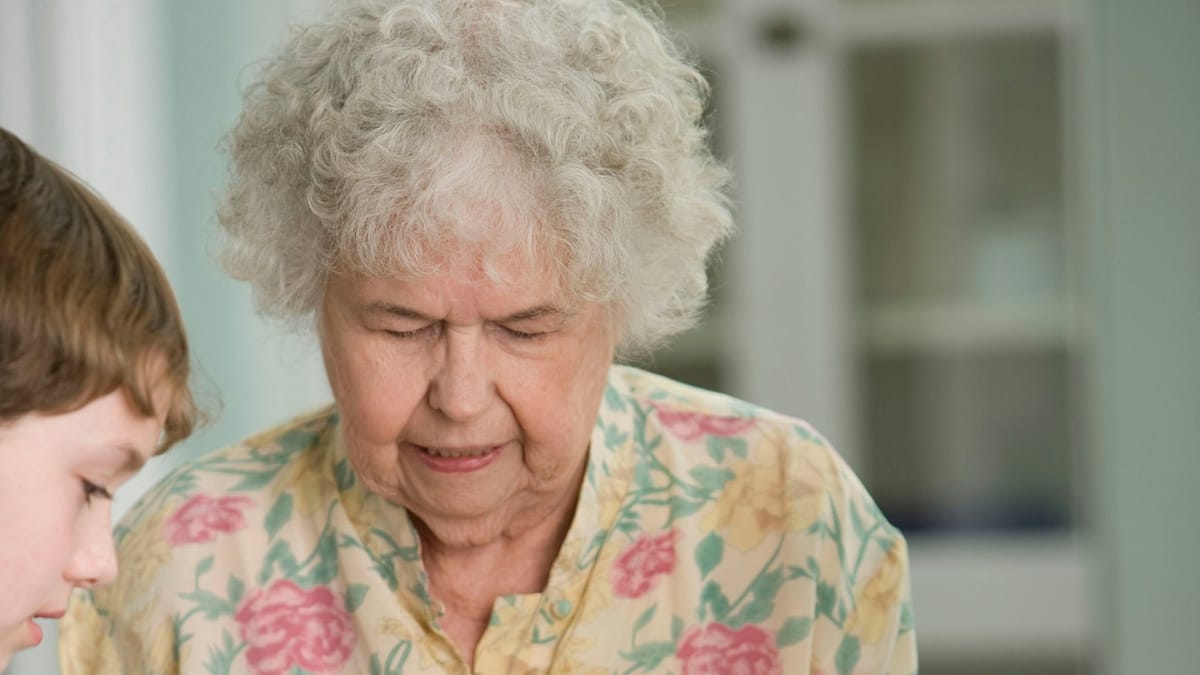How to Prevent Falls in the Kitchen?

Introduction to Kitchen Safety Hazards and Preventing Falls
The kitchen is an essential part of everyday life, but it can also be a hazardous place. Every year, thousands of people suffer from falls in the kitchen—it's all too easy to trip over something or slip on a wet surface. To protect yourself and your family from falls and injuries, it's important to understand the risks and take proactive steps to reduce them.
In this guide, we'll cover the common hazards that can lead to falls in the kitchen, along with practical tips for reducing the risk and staying safe. We'll discuss assessing your risk, identifying trip and slip hazards, proactive strategies to prevent a fall and enhancing mobility in the kitchen. Lastly, we will also talk about how to maintain a safe home environment and utilize proper body mechanics.
Let’s start by understanding the kinds of hazards that can cause falls in the kitchen.
Assessing Your Risk for a Fall in the Kitchen
Falling in the kitchen can result in serious harm, so it is important to assess the risk of falling and take measures to reduce or eliminate it. Start by taking an overall look at your kitchen environment and identify any potential hazard that could lead to a fall.
Take note of any uneven surfaces, electrical cords, or other obstacles that you frequently walk over in the kitchen. If your kitchen has rugs or mats, make sure they are firmly secured to the floor and note any loose edges. Consider the layout of your kitchen, if it contains narrow aisles or tight spaces which can make it difficult to maneuver around.
Also, make sure you consider the physical aspects of your body when assessing your risk for a fall. Think about any medical conditions such as joint pain, dizziness, or arthritis that may increase your risk. Also, consider whether you have difficulty with your vision or balance, or any recent changes in your physical strength and dexterity.
Once you have identified potential risks, you can take steps to reduce the chance of slipping or tripping in the kitchen. Take a look at some of the strategies below to help you stay safe and prevent falls.
Identifying Common Trip and Slip Hazards
When it comes to preventing falls in the kitchen, the first step is to identify any potential areas of risk. Common trip and slip hazards around the kitchen include items such as area rugs, wires or cords, pets, slippery floors, and poorly lit areas. Identifying these potential risks before they can cause an accident can go a long way in reducing the chances of falling.
For example, if your kitchen has a hardwood or tile floor, it can become very slippery when wet. To reduce this risk, be sure to place non-slip mats around the kitchen, especially near the sink or any other source of water. This will help to prevent slipping in the kitchen and also reduce the tension on your joints and muscles.
Additionally, look out for any area rugs or mats that may not be secure. If these items are not properly secured, they can easily get caught in your feet and cause you to trip or slip. The same can be said for wires or cords that lay on the floor. Keep these items tucked away and out of the way so that they do not pose a hazard.
Finally, proper lighting is essential in the kitchen so that you can clearly see what you are doing. Make sure that all of the lights in your kitchen are in working order and that you are using bright bulbs. installing additional lights, such as under-cabinet lights, can also be helpful for illuminating darker areas or corners of the kitchen which may pose a risk for falls.
Ways to Reduce Tension on Joints and Muscles
One of the best ways to help prevent falls in the kitchen is to reduce the tension on your joints and muscles. Spending time in the kitchen can often leave us feeling stiff and achy due to the repetitive motions we make when cooking, cleaning, and prepping food.
To help reduce tension, you should take regular breaks while working and stretch regularly to keep your muscles and joints flexible. Consider investing in an ergonomic kitchen cutting board, so you can reduce the strain on your wrists by cutting food at a more comfortable angle. You should also use correct posture while standing or sitting in the kitchen, as bad positioning can increase stress on your neck, back and joints.
Another way to reduce tension is to invest in proper kitchen tools and gadgets. Use utensils with comfortable handles that fit your hands and require minimal effort to operate. Quality kitchen knives should also be considered as they will be easier to maneuver and require less force to use. Lastly, be mindful of how you move when carrying heavy items such as a pot of boiling water, as this could put considerable strain on your muscles and joints.
Proactive Strategies to Prevent a Fall
Falls in the kitchen are one of the most common accidents that can occur in the home, and can lead to serious injury and even death. Being proactive in your approach to preventing falls can help keep you safe and healthy. Here are some ways to reduce your risk of a fall in the kitchen:
- Assess your risk: Start with a comprehensive assessment of potential risks, such as loose flooring or clutter. Make sure to take note of any areas where you feel unsteady.
- Reduce tension on joints and muscles: Perform stretches and exercises that improve balance, strength, and flexibility. This will reduce the risk of muscle strain and overuse injuries while moving around the kitchen.
- Utilize top-notch lighting: dim lighting can increase your chance of a fall. The best way to prevent this is to make sure that you have adequate lighting in the kitchen.
- Use non-skid shoes: Wearing slip-resistant shoes with good traction can help you stay balanced in the kitchen.
- Maintain a safe environment: Remove any tripping hazards from the kitchen such as boxes or electrical cords that may be on the ground. Place a non-slip mat in front of the sink.
- Train your mind: Improving your mental and cognitive awareness can help you stay alert and aware of your surroundings in the kitchen.
- Use proper body mechanics: When engaging in physical activities, it is important to use proper posture and body mechanics to reduce the risk of a fall. This means keeping your back straight and keeping your weight evenly distributed on both feet.
By following these steps, you can greatly reduce your risk of falling in the kitchen and ensure that you remain safe while going about your daily activities.
Utilizing Adequate Lighting in the Kitchen
Adequate lighting in the kitchen can help to reduce the risk of falls. When you are preparing food or doing other activities in the kitchen, it is important to be able to see well. Poor lighting can lead to tiredness and fatigue, reducing balance and alertness.
To ensure that you have sufficient lighting in your kitchen, consider incorporating task lighting. This includes a light that is designed to focus on a specific task. For example, if you are working at a countertop, you may want to install lights underneath the cabinets or over the counter. This will provide bright light exactly where you need it, while also helping to reduce shadows in the kitchen.
You should also consider adding ambient lighting to your kitchen so that the entire room is well lit. This type of lighting, which includes overhead lights, track lighting, and pendant lights, can help to illuminate the kitchen and make sure you can see any obstacles or hazards. You may also want to use dimmers so you can adjust the lighting depending on the activity.
Enhancing Mobility in the Kitchen: Improving Balance, Strength and Flexibility
As we grow older, we become more prone to falling. While falls can be a result of a number of underlying health issues, many falls occur when you are not able to properly balance yourself or have the strength and flexibility to move quickly and safely around your kitchen. Enhancing your mobility in the kitchen by improving your balance, strength and flexibility, can help to reduce your risk for a fall.
Improving your balance can help to prevent a fall in the kitchen. As with any type of activity, it is important to warm up before engaging in any strenuous activity. Doing a few simple balance exercises can help to reduce your risk of a fall. Some exercises to try include: standing on one foot for 60 seconds, stepping side to side, and walking heel-to-toe in a straight line.
In addition to balance exercises, strengthening and stretching exercises, also known as range-of-motion exercises, can help to increase your strength and flexibility. These exercises can be done at home and should focus on the large muscle groups, such as the legs, arms and back. Examples of range-of-motion exercises include wall pushes, arm raises, and ankle pumps. It is also important to incorporate aerobic activity into your daily routine, such as walking or swimming, which can help to improve blood flow to the brain, and help to reduce the risk of a fall.
Non-Slip Mats and Carpets: Ways to Minimize Slipping Risks
Slipping and tripping related falls can be significantly reduced with the use of non-slip mats and carpets. Non-slip mats and carpets increase traction, providing additional grip when you are walking on the floor. They also help cushion falls if they do occur, resulting in a less severe injury.
You should check that your kitchen floor is covered with appropriate, non-slip material, as this can help reduce slips and falls. Areas that are more likely to be wet or slippery, such as around the sink or stove, should be especially well covered. The mats and carpets should also be placed in areas where you stand for long periods of time, such as near the countertop or counter surface.
For optimal safety, non-slip mats and carpets should be cleaned on a regular basis. Dirt and debris can accumulate quickly on rugs, resulting in a hazardous surface. You should also replace any worn out mats and carpets, as they may no longer provide adequate grip. Lastly, make sure the mats are firmly secured to the floor – loose mats can create an even greater hazard if they move during use.
Training Your Mind: Improving Mental and Cognitive Awareness
One of the most important elements of preventing falls in the kitchen is to strengthen your mental and cognitive awareness. This involves having an understanding of your surroundings, being aware of possible hazards, and making decisions quickly and wisely. It’s essential that you stay as alert and focused as possible while in the kitchen.
In order to improve your mental awareness, consider practicing focusing on the task at hand. It’s easy to be distracted by your thoughts, the clutter in the kitchen, or other activities, but that can cause you to become less aware of your environment and more likely to miss potential risks. Try to stay mindful and present, investigating each area before deeply engaging in an activity.
It can also be helpful to become familiar with the contents of your kitchen. When you know where all of the objects are and how to access them quickly, it reduces the time you spend looking for items or attempting to move around messes. Additionally, try to become comfortable with cognitive tasks like problem-solving and decision-making. This will help you to react quickly and properly in the event of a fall hazard.
Wear Non-Skid Shoes: Increasing Traction and Balance in the Kitchen
One of the most important steps you can take to prevent falls in the kitchen is to wear non-skid shoes. Wearing shoes that have good grip and traction can help provide stability on slippery surfaces and reduce your risk of falling. This is especially important if you are dealing with spills or liquids in the kitchen, as these surfaces can become even more slippery.
It is important to choose shoes that have a thick sole and good grip on the bottoms. Look for shoes made of rubber or other materials that provide good traction on wet and dry surfaces. Additionally, look for shoes that fit correctly and provide adequate arch support. Wearing shoes that are too big or too tight can lead to foot pain and an increased risk of slipping.
- Choose shoes that have good grip and traction
- Look for shoes made of rubber or other materials that provide good traction
- Wear shoes that fit correctly and provide adequate arch support
Non-skid shoes can help you maintain balance and stability while navigating the kitchen. Make sure to check the soles of your shoes regularly to make sure they are still providing enough grip and traction. Additionally, be sure to discard shoes that are worn out or no longer provide good grip.
Use Proper Body Mechanics When Engaging in Physical Activities
Ensuring that you use proper body mechanics when engaging in physical activities is an important part of preventing falls in the kitchen. Proper body mechanics is the use of correct posture, body alignment and muscle coordination to perform movements more efficiently and with less strain.
To use proper body mechanics when engaging in physical activities, it is important to keep the following tips in mind:
- Maintain good posture at all times, and avoid slouching, hunching or any other type of abnormal posture.
- Do not twist your body when lifting or carrying something.
- Keep your chin tucked in to reduce strain on your back and neck.
- Be aware of where your weight is concentrated when standing, so you don’t tilt to one side more than the other.
- When sitting, ensure that you are sitting up straight and keeping your feet flat on the floor.
- Whenever possible, avoid any activities that require you to bend down to pick things up off the floor.
By using proper body mechanics when engaging in physical activities, you can reduce the risk of injury and falls in the kitchen.
Maintaining a Safe Home Environment
In order to prevent falls in the kitchen, it is important to maintain a safe home environment. This includes ensuring that all flooring surfaces are clean and free of debris, and that furniture and appliances are placed securely on the floor and against walls. Rugs should be fitted with a non-slip backing, and any loose cords or wires should be tucked away out of reach.
It is also important to check for other safety hazards throughout the house, such as loose steps or stairs, damaged flooring, or areas that may be prone to slipping or tripping. Make sure that any handrails or guardrails are properly secured, and that any ladders or step stools are secure and easy to reach. If you live in an older home, consider having a professional inspect for any potential safety risks.
Finally, make sure to keep your home well-lit and clutter-free. Make sure that pathways are clear and easy to navigate, and use nightlights in hallways or stairwells to provide additional visibility. Proper lighting is especially important for those who may not have great visual acuity, and it can help to create a safer home environment.
Conclusion: Putting it All Together and Staying Safe in the Kitchen
Taking the steps to prevent falls in the kitchen is essential to ensure your safety. From assessing your risk for a fall, to making sure that you have the right equipment for optimal mobility, with the help of this guide, you should now be able to recognize and address potential fall hazards in the kitchen.
By using proactive strategies to reduce tension on joints and muscles, improving lighting, wearing non-skid shoes and practicing proper body mechanics when engaging in physical activities, you can start building safer habits in the kitchen. Finally, don’t forget the importance of training your mind in order to be aware of your surroundings.
Following these simple tips will significantly reduce your risk of a fall and improve your overall safety in the kitchen. Remember to assess the environment regularly and make changes as needed. By remaining vigilant about kitchen safety, you can keep yourself and your loved ones safe from falls.




